DIY Van Build: Tips from van life experts
2533 shares So you want to build your own DIY campervan? This could be the year when you ditch your 9-5 job for a life…

So you want to build your own DIY campervan? This could be the year when you ditch your 9-5 job for a life of freedom, adventure and exploration.
But first, you’ll have to put a lot of thought into your campervan build.
What type of campervan do you want? How much room do you need? Which components are essential for your DIY campervan? Do you need a shower? A portable toilet?
There are so many options for living the van life that it can become overwhelming, which is why we wanted to put together a list from van life experts to help you with your journey.
*This post may contain affiliate links. Please read our disclosure policy for more info.
Choosing the right van for a DIY van build
Choosing a van for a DIY van build is the most important part of living the van life. You’ll need to think about size, gas mileage, and whether you need to stand up in your van.
These articles will get you started with picking the best rig to live in:
The Best Vans to Live In
Wondering which van to choose for a DIY Campervan? Check out these top articles.
The 13 Best Vans to Live In for Van Life
This post will help you narrow down which van to choose, from large vans, to vintage vans to small vans.
The top 4 cargo vans for a mini camper conversion
Want a smaller van for van life? Check out the Ford Transit Connect, Ram Promaster City and Mercedes Metris, plus pros and cons of each.
Is a Sprinter Van Conversion Right for You? Our Ultimate Guide.
Sprinter vans are very popular for a DIY van conversion. Check out these examples and learn the pros and cons.
Ford Transit Camper Van: The Ultimate Guide
Many are choosing Ford Transit vans for a DIY Van build as they are cheaper and easier to fix.
Why a Ford Transit Connect camper rocks for van life
Want something super small and affordable? Check out the Ford Transit Connect and learn about transmission issues.
16 SUV Camper Ideas [DIY, SUV Conversion Kits & SUV Tents]
SUVs can also easily be turned into DIY campervans for affordable van life.
Insulating your DIY van build
Insulating your DIY van build is an important aspect of your van build. Insulation isn’t only important for van life in cold weather climates, but can also work to keep the warm air out.
Proper insulation can also increase ventilation and reduce condensation and airflow.
Some vans don’t need insulation, like if you buy a conversion van which is sent to a third party to turn into a luxury-style van. My Chevy Astro currently doesn’t need additional insulation.
But if you’re doing a DIY van build on your own, you’ll have to put some type of insulation into the walls and sometimes floor and ceiling. Here are the top resources for insulating your van build:
DIY Campervan Insulation Tips
Insulating Your Van: Everything You Need to Know for Your DIY Van Build
Adding electrical and solar to your DIY van build
Many van lifers choose to install some type of electrical system in their vans.
Sure, you can get away with your 12-volt cigarette lighter for simple things like charging your computer with an inverter or temporarily running a portable refrigerator or heater.
But if you want a more sustainable setup, you’ll have to put some sort of electrical system in your campervan.
There are a couple of ways to do this. You can use a portable solar generator to power your devices off the sun, or you can build an integrated system into your van with solar panels and an external leisure battery.
Here are some articles to help you with your electrical system:
Electrical and Solar Ideas for a DIY Van
Epic Guide to DIY Van Build Electrical: How to Install a Campervan Solar Electrical System
Sprinter vs. Transit: The Nitty Gritty
Let’s see how these two vans compare in four critical areas.
1. Maintenance Costs

Let’s face it: every vehicle needs repairs, and taking care of issues is crucial when your vehicle is also your home!
Aside from budgeting for regular oil and tire changes, you’re well-advised to have extra savings when something unexpected happens.
A Ford Transit is not only more affordable upfront, but it’s also cheaper to maintain.
Replacement parts are affordable and widely available, which is a huge bonus.
You’ll also have extra peace of mind in a worst-case scenario since Ford dealers and mechanics are in almost every town.
Maintenance is one of the main reasons solo US female van lifer Ricki (@rickiontheroad) chose a Ford Transit to call home: “I went with a Transit because it’s less expensive and more places will service it. While Sprinters may need maintenance less often, the thought of needing maintenance in a remote town and no one willing to work on my vehicle was enough to get a Transit.”
Colby and Eric (@engineerswhovanlife) agree with Ricki: “The ease of maintenance and servability of an American-made camper van was crucial for us. Living on the road full time, we have heard horror stories of Sprinter owners having to pay for 200+ mile tows when they break down, or parts being really difficult to source. Fords are everywhere here, and we have never had an issue with towing or parts.”
Things are a little different when it comes to owning a Sprinter. Internet forums are full of horror stories about DEF sensor failure, black death, and the dreaded limp mode.
When a serious problem arises, a dealership is often the only place able to help, so you’ll have to find your way to the nearest big city.
Keith and Hannah (@keithandhannahh) are full-time van lifers who live in a Sprinter van, and they agree that the initial cost of the cargo van plus the more expensive maintenance costs are the only cons to choosing a Sprinter vs. a Transit.
“In our opinion, the only con is the price because a Sprinter costs slightly more (not always). You might spend more on parts to fix it, but we bought a new van and haven’t had any fixes because we keep up with all the maintenance. We’ve always had a good experience with Mercedes, trust in them as a brand, and love to see how much they’ve embraced the van life space,” said Keith and Hannah.
Add in the fact that repair costs can be substantial and you may have to wait weeks for parts to arrive, and it’s no wonder this is a sticking point for many people in the Ford Transit vs. Mercedes-Benz Sprinter debate.
2. AWD/4×4 Options

For those traveling back roads, especially during winter, a 4×4 Sprinter is the most attractive option. The downside is you’ll have to purchase a 2022 model (or earlier) since Mercedes-Benz no longer makes 4×4 Sprinters as of 2023.
A 4×4 Sprinter has a much higher clearance than a standard 2WD model, and it can go just about anywhere, making it ideal for off-grid adventuring.
As of 2023, Mercedes-Benz makes AWD Sprinter vans with diesel engines. Although you’ll need to spend more upfront for a Sprinter van with AWD or a 2022 (or earlier) model with 4×4, it will hold its value if you ever want to sell it.
The AWD Transit and Transit Trail are becoming increasingly popular, though they’re only available with a gasoline engine.
Colby and Eric (@engineerswhovanlife) wrote an article on their blog about why they chose a Transit over a Sprinter (and ProMaster). They said they like how a Transit has “the shorter wheelbase of the Transit driving more like a car and the AWD drive train.”
Although it’s a big step up from the 2WD Transit, you’ll need to pay for a lifted suspension if you want more clearance on a standard Transit. As mentioned earlier, the Transit Trail at least has a significant lift of 3.5” compared to the standard Transit.
If you still want a 4×4 campervan and are leaning towards a Ford Transit, you can pay for an after-market 4×4 conversion.
Although you’ll pay around $13,000 for a Quigley’s conversion from Sportsmobile, the overall cost could be less than what you’d pay for a 4×4 Sprinter, leveling the playing field in the Sprinter vs. Transit game!
3. Suitability For Conversions

As we’ve already seen, there’s much more interior standing space in a High Roof Transit and High Roof Transit Trail, which could be the clincher for taller friends.
Although there’s less space in a Transit, the square shape makes it easy to do a quick and affordable conversion.
Another big plus is the Transit’s interior width, which makes it possible to install a bed width-ways, freeing up more living and storage space inside the van.
Colby and Eric (@engineerswhovanlife) have chosen Transit vans twice (about to be three times)! They said that one reason they prefer them for a conversion is the added height: “The Transit is the tallest of the three more common chassis. The interior standing height of the Transit is 4” taller than the Sprinter. Eric is tall so this was a must for us!”
When converting a Sprinter, the biggest advantage is the ample space inside, especially in the 170″ wheelbase extended model.
If you plan on living in your van full-time or with kids, the huge space inside a Sprinter could make it a clear frontrunner.
Although you’ll probably have to sleep lengthways in your van unless you are shorter and install flares, there are loads of ways to integrate storage space into your design.
4. Diesel vs. Gasoline

When considering the Sprinter vs. Transit question, one of the most important differences is the fuel each van uses.
Most Sprinters have diesel engines, which means better fuel economy and a longer lifespan.
The fuel economy of a Sprinter is one of the reasons why van lifers Keith and Hannah (@keithandhannah) chose a Sprinter for their DIY conversion: “Sprinter vans are super reliable, have a great fuel economy even after the vans are built out, and hold their value. We’re not tall, so livability is perfect, and in our opinion, it looks the best.”
That said, diesel is more expensive at the pump, and locating the Ultra Low Sulfur Diesel (ULSD) that Sprinters require could be a real problem if you travel to Central or South America.
If you plan on extended foreign journeys in your camper van, you’re probably better off going with a Ford Transit van, despite its inferior fuel economy.
Why I Chose a Sprinter Van

When my husband and I shopped for a campervan to call our home and live in full-time, we researched popular modern chassis, including Sprinters, Transits, and ProMasters.
I considered the Ford Transit Trail over the Sprinter. I liked the cheaper price tag, and my husband and I grew up driving Ford vehicles.
Plus, since my husband is tall at 6’5”, I wondered if he could stand more comfortably in a Transit Trail.
However, I knew I wanted a professional conversion and needed my van finished when my apartment lease ended. I had to rule out the Transit Trail as those vans were not readily available then.
I ultimately went with a 2022 Sprinter van to have 4×4, a reliable van for full-time living, and a van with excellent resale value.
I also like the look of a Sprinter, and my husband found he could stand up inside it without needing to squat or bend.
I appreciate having the peace of mind of a 4-wheel drive van on steep, rocky roads and during winter conditions in Colorado (where we spend much of our time).
Ford does not make 4×4 vans, so I already felt hesitant about going with one of those vans in case I ever found myself in a difficult position on the road.
Since I planned to live in my van full-time with my husband and dog, I wanted a reliable and high-quality chassis.
Although services on Sprinters are expensive, I appreciate how Sprinter vans don’t need to be serviced as often and rarely have parts that need replacement since they are made with quality from the get-go (in my experience).
I also chose a Sprinter over a Transit due to the resale value. I knew my family would do van life for 1-3 years and eventually want to sell the van.
I have not yet reached the point where I’m looking to sell my Sprinter van, but I feel confident that I will get a pretty good return on investment when the time comes.
Appearance was not a huge factor in our decision, but since my husband is a photographer and enjoys taking drone shots of our van in epic places, it is a definite plus!
Should I Get a Sprinter or Transit?

If you’re hoping for a verdict on which vehicle is better for van life, you’re out of luck!
Sprinter and Transit vans are excellent choices for van dwellers, and each has unique pros and cons.
Although Keith and Hannah (@keithandhannahh) chose a Sprinter van, they said, “A Transit van would be a close second!”
I agree and could easily see us switching from a Sprinter van to a Ford Transit (specifically the Transit Trail) someday, especially if we purchase a home and want a van for part-time traveling.
I have nothing negative to say about the Sprinter other than the initial high price tag and expensive service costs.
The Sprinter vs. Transit debate rages on, so you must weigh the pros and cons and decide which best fits your needs and budget.
I hope you’ve found this article interesting and helpful in your quest to find your dream van. Please feel free to leave any questions or comments below!
Other Van Life Stories You’ll Love:
- Why a Ford Transit connect camper rocks for van life
- These car camper conversion kits might change your life
- 4 Cool Sprinter Van Bunk Beds And Where To Buy Them
Putting a kitchen in your DIY van build
Anyone living in a DIY campervan will want some sort of campervan kitchen. Whether you put a kitchen inside your van or install it in a pull-out drawer is up to you.
Some people choose to put the whole 9 yards inside their DIY van- a sink, water, portable refrigerator, burners and even a stove. Others choose a simpler setup with a pull-out drawer with a propane camping stove.
The awesome thing about van life is you can get creative when designing your campervan.
Here are some campervan kitchen setup ideas for your new ride:
Campervan Kitchen Ideas
Putting a bathroom into your campervan
There are various opinions on whether you should put a bathroom in your campervan. Some love the convenience of having a toilet indoors, but others don’t like to deal with the mess. Some choose to go just in campgrounds, rest stops and in nature.
What you want to build inside your van is entirely up to you, which is one of the main draws of van life.
Personally, I don’t want to put a toilet inside my Chevy Astro van because its so small and I don’t want to deal with the stink, but I know plenty of van lifers who choose to go that route.
But if you absolutely need a toilet in your van, here are some articles you should read:
Campervan Bathroom Ideas
Sleeping comfortable in your DIY van build
Adding a bed to your van is an important part of your DIY campervan layout.
In our Chevy Astro, we just fold the back bench seat down and put our feet on a couple stools.
Although in a perfect world, we’d have a folding campervan bed with storage underneath.
Here are some ideas for your DIY van build’s bed!
Campervan Bed Ideas
What Type Of Mattress To Get For Your Camper van + How To Cut It
Tips for living in your new DIY campervan
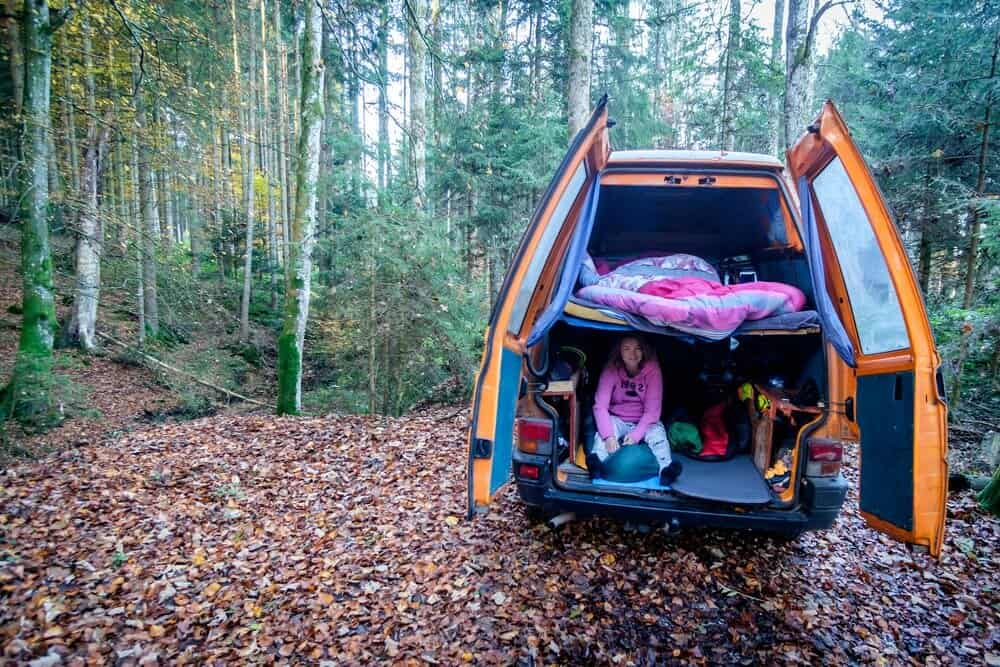
Once you convert your van into a camper, you’ll have to learn how to start living in it. Where do you sleep? Where is legal to park? How do you get away with parking on city streets?
For more intel on living the van life, check out these articles:
How to legally insure a campervan, tips from a van lifer – via The Wayward Home
How to find health insurance as a van lifer – via The Wayward Home
How to get internet in your campervan – via The Wayward Home
Is it illegal to sleep in your car overnight – via The Wayward Home
14 secrets to stealth camping in your van without getting caught – The Wayward Home
How to find public showers when living the van life – The Wayward Home
30+ ways to make money from your campervan – via The Wayward Home
Conclusion on DIY van builds
Building out a campervan if you don’t have any DIY skills can be daunting, but plenty of people do it. You can find campervan build videos on YouTube that can teach you most everything you need to know about building a van.
If you need a little help, you could always hire a van build company or purchase a pre-made campervan conversion kit.
You can also purchase campervans from sites like Craigslist or Class B Campervans for sale on Facebook.
Good luck on your van life journey!
Get your FREE Van Life Starter Kit!
So you want to live the van life but have no idea which van to choose? Here are specs for 10 popular vans, van buying tips, remote work ideas and van build resources. Get your FREE kit now!



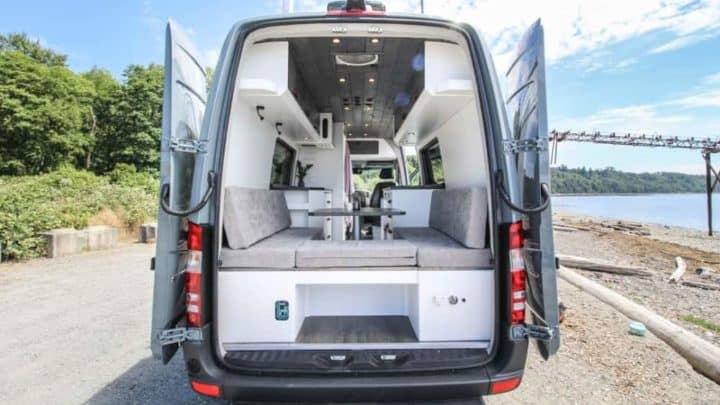



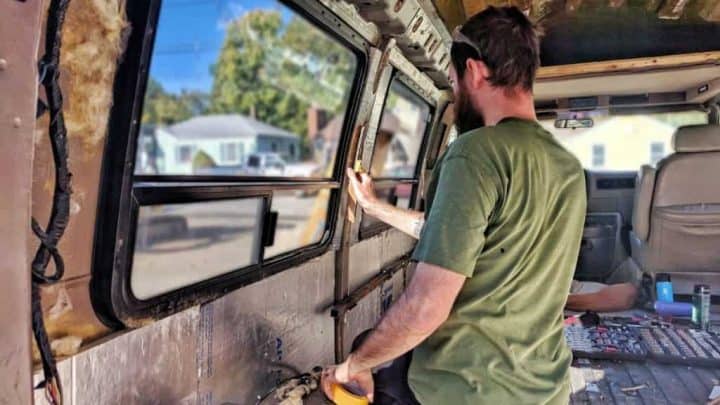
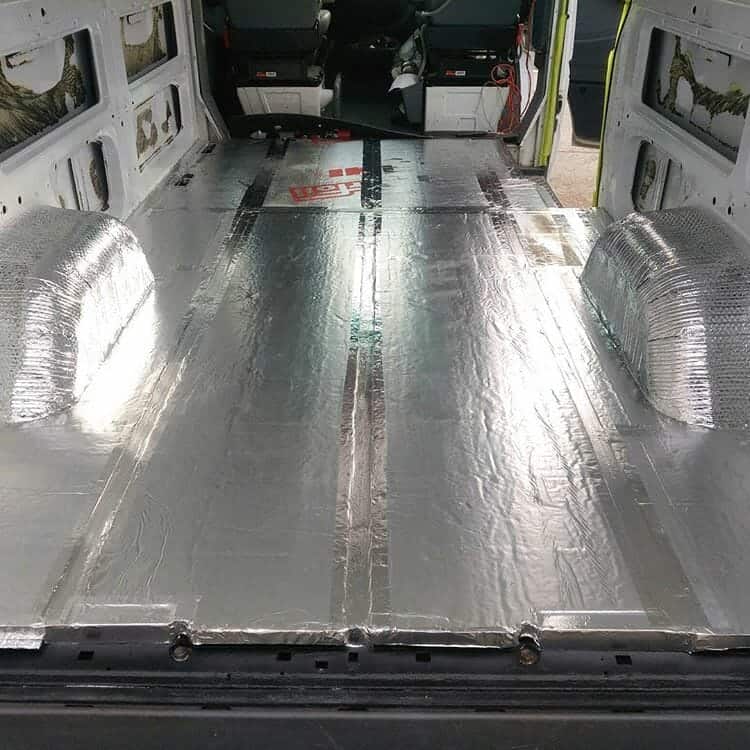
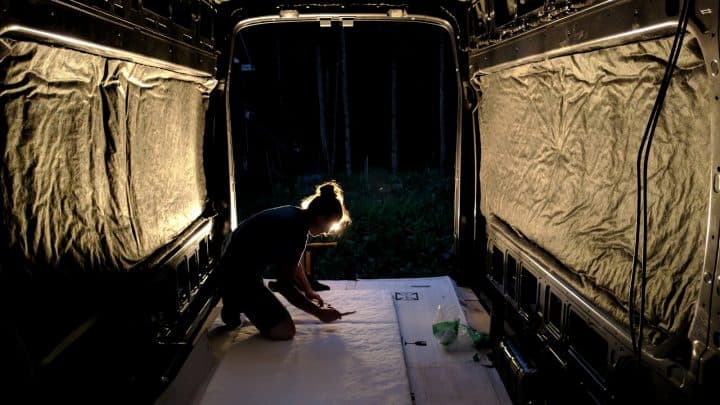
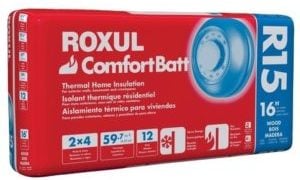

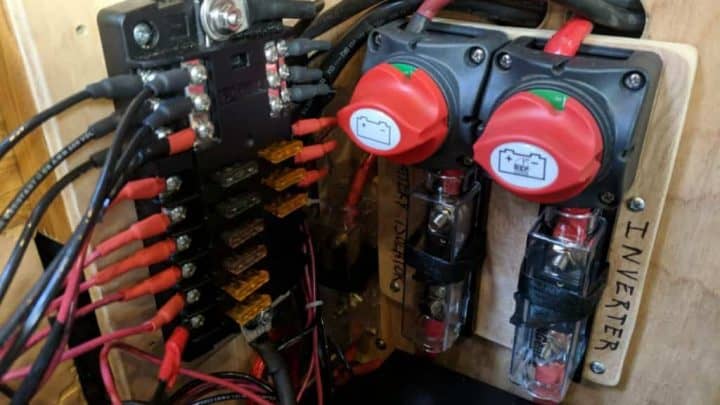


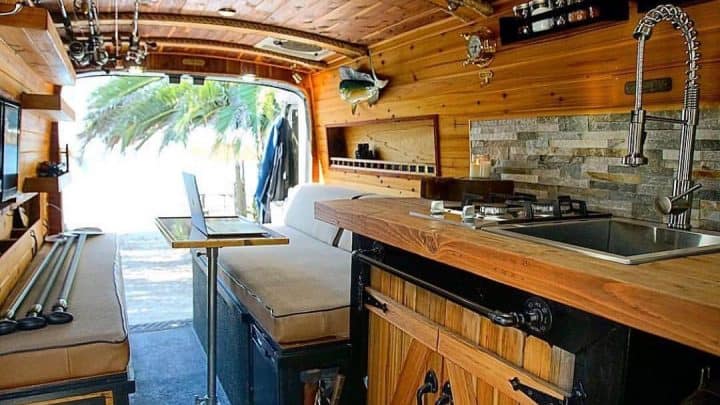
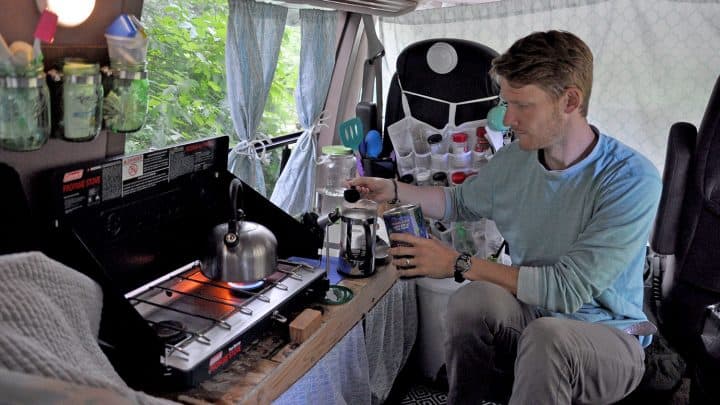
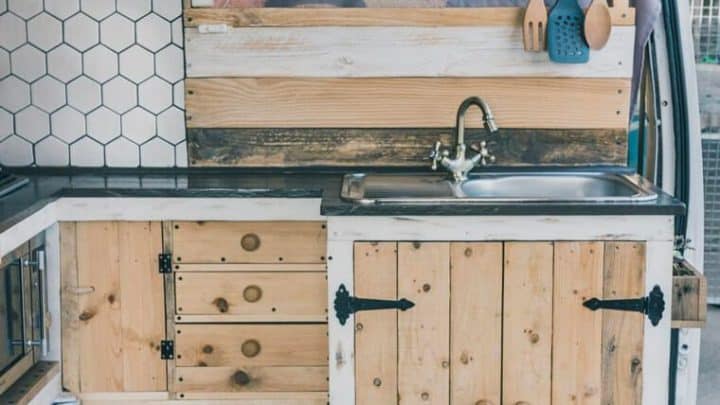
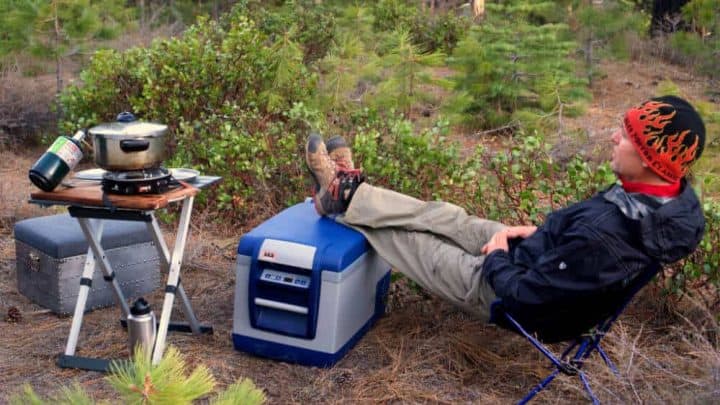

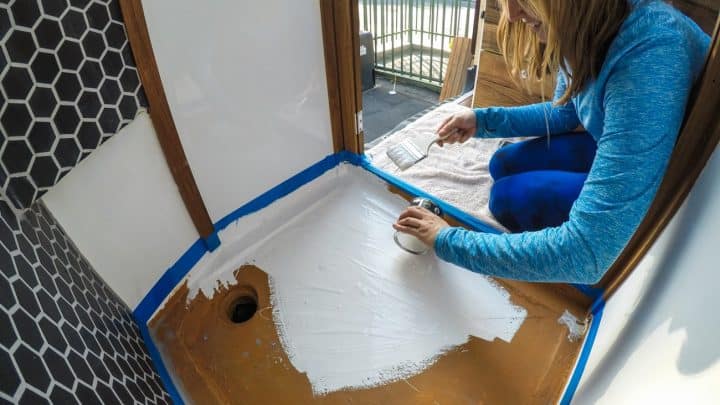
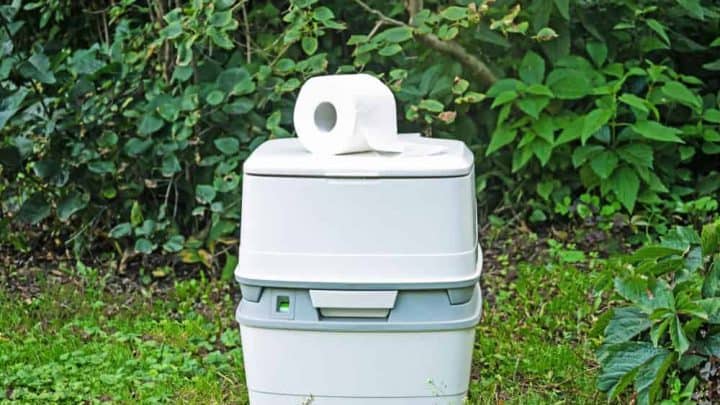

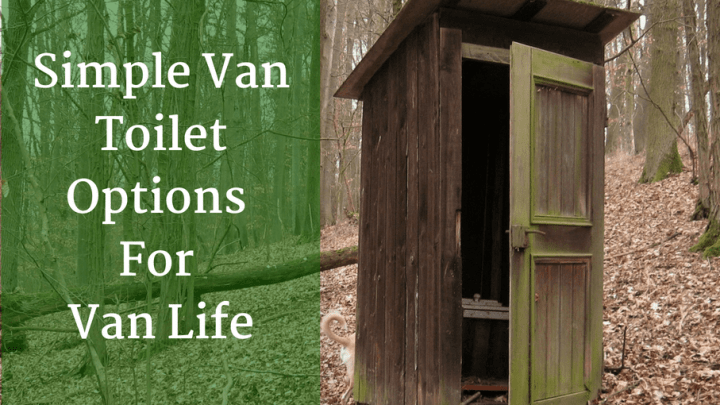

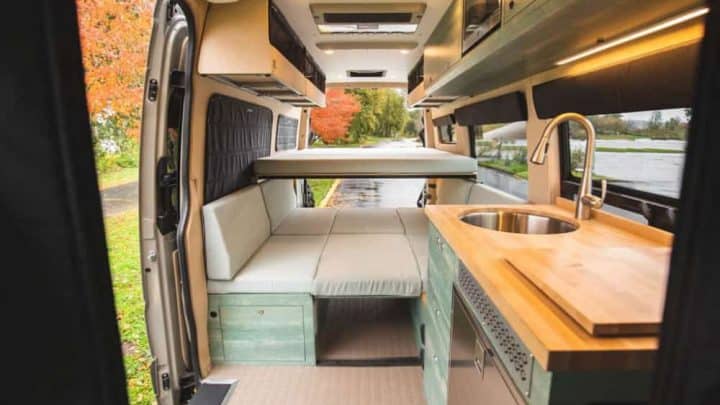

Similar Posts
Kia Sedona Camper Conversion: 9 Inspiring Examples and Conversion Kits
This couple uses a converted minivan, Airbnb, and Trusted Housesitters to live a nomadic life and work remotely while traveling the US.
10 Delicious Vegan Camping Meals for Van Life
Looking for some quick and easy vegan meals to make while camping in your van? We’ve rounded up 10 favorites.
How to Beat Van Life Loneliness by Finding Community on the Road
Van life doesn’t have to be lonely. Here are ways you can make friends living on the road.
Honda Pilot Camper Conversion: Tips And Inspiration
Do you have a Honda Pilot you want to take camping? Fortunately, it’s really easy to turn these SUVs into the perfect camping machine. Here are our tips and ideas!
The 6 Best Car Mattresses for Comfortable Car Camping Adventures
A comfortable bed when you’re camping makes all the difference. Here are some beds you can put in an car camper, SUV, or van!
Van Flooring: The Best Options for a DIY Van Build [Subfloor & Topfloor]
Are you wondering about the best subfloor and top-floor options for your camper van conversion? It can be hard to decide what to go with….